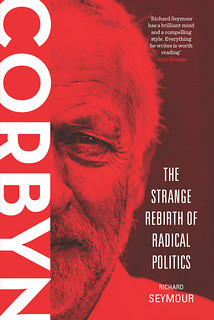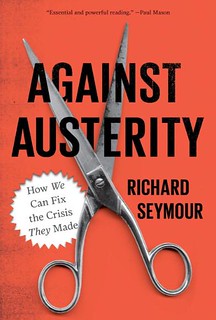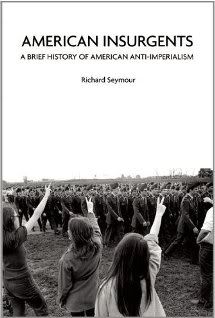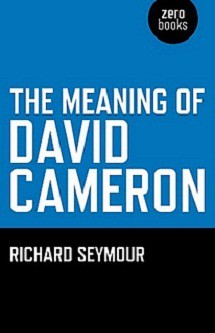Thursday, November 12, 2009
American Insurgents posted by Richard Seymour
Review of Gerald Horne, The End of Empires: African Americans and India. “The Vanguard of Anti-Imperialism...”
“The Vanguard of Anti-Imperialism...”Gerald Horne is an historian who has been revealing neglected aspects of African American history for several decades, particularly those relating to class struggle, communism, and what W E B Du Bois referred to as the global ‘colour line’.
In The Deepest South, he disclosed the efforts by Deep South slavers to form a pact with Brazil and build a southern empire that would protect white supremacy. At the same time, he revealed, Lincoln and the northern establishment looked toward schemes that would result in the removal of former slaves from the United States, perhaps to indentured plantations in the British Empire. Again, in The White Pacific, he followed the trail of former slave-owners as they set out across the Pacific, to Australasia and the Pacific Islands, where they engaged in a form of slavery known as ‘blackbirding’. In Cold War in a Hot Zone, he demonstrated the links between African American struggles during the Cold War and militancy in the Caribbean as the British empire was replaced by American dominance. And in Black and Red, he anatomised the African American response to the Cold War, noting that “US Blacks have been among the vanguard of anti-imperialism”.
In this, his penultimate volume, African American anti-imperialism is at the fore again, as Horne assesses the relationship between the Indian struggle for independence from the British empire and the African American struggle against Jim Crow. It is reasonably well known that Martin Luther King was influenced by Gandhi’s doctrine of satyagraha (non-violent resistance), and perhaps less so that Bayard Rustin, James Farmer, Pauli Murray and others also drew on Gandhi’s doctrines. Nehru’s speech at the founding of the Non-Aligned Movement of Third World states paid moving tribute to the struggle of Africans, and particularly of African Americans, whose liberation he pledged India would support. A more recondite affinity drawn out by Horne is the influence of the Ahmadiyya movement of Indian Muslims on African Americans in the early 20th Century – an influence that would later be felt through the Nation of Islam.
Horne traces these connections, from prehistorical origins to the twentieth century, with the overwhelming focus on the decades leading up to Indian independence and the culmination of the civil rights struggle. The shared historical destinies of black America and India arguably began with the American revolution, when some revolutionaries looked to India as a potential anti-colonial ally. Their fate was subsequently bound together through the production of cotton and the circulation of slaves between south Asia, Africa and the United States. Opposing antebellum slavery in the United States, abolitionists in England deplored the country’s manufacture of cloths from slave-produced cotton when it might just as well have been obtained using free labour from the banks of the Indus, at less cost. The Indian rebellion of 1857 carried grave race warnings for the United States. For some, it showed the madness of trying to permanently rule over non-white people. Andrew Carnegie, visiting Lucknow in 1879, fretted that “these bronzed figures which surrounded us by millions” may once again “in some mad moment catch the fever of revolt”. It showed what a “dangerous game” it was for the US to try to conquer neighbouring islands populated by black majorities. Carnegie would go on to become a generous benefactor of the Anti-Imperialist League when it was founded in opposition to the Spanish-American war of 1898. Similarly, the Civil War of 1861-65 which was to end in the abolition of slavery (quite against the original intentions of the North) was closely determined by the availability of cotton from India, not least because it dissuaded English capitalists from throwing their weight behind the Confederacy to defend their cotton access.
Interwoven destiny
African American activists, cognisant of such an interwoven destiny, sympathised with the plight of Asia. Booker T Washington and Jawaharlal Nehru both sympathised with Japan in its 1905 war with Russia, hoping that victory for the former would boost Asian chances of independence from would-be racial oppressors. African American journals considered that a victory for the Tsarist empire would be a “triumph for color prejudice”. The grounds for direct solidarity with Indians were enhanced by the treatment of Indian labourers who migrated to the United States and were treated by racist politicians, including the presidential contender William Jennings Bryan, as a great “peril” to the American way of life.
As a result of this oppression, Indian labourers tend to live among and associate with African Americans. But the first sign of a direct political connection between India and black America was the emergence in 1889 of the Ahmadiyya movement by Mirza Ghulam Ahmed. Early on, the movement despatched a mission to the United States, just as African American Christian missionaries had – with less success – visited the Indian subcontinent to find converts. The movement hinted at a new racial synthesis that was also increasingly emerging in the thoughts of Islamic modernists such as Jamāl-al-dīn al-Afghani: a pan-Islamic alliance that would unite Indian anti-colonialism with Pan-Africanism.
 Marcus Garvey had direct links with the Ahmadiyya movement, which would go on to win up to 10,000 African American converts by 1940. Certainly, the critique of Christianity as a primary motive force in racial oppression had a profound influence on Garvey’s movement, though Garvey himself remained a Christian. The movement’s influence was not uncomplicatedly positive, for its leadership forbade revolt against London, and was seen by many in India as a British tool – and there is some evidence for the idea that Britain, as part of its traditional divide-and-rule strategy, promoted the Ahmadiyya movement among Indian Muslims. Nonetheless, Islam gripped the imagination of a minority of African Americans in part because it added to the political struggle a spiritual dimension, a war against Christian ideas, which were seen as the ideas of the slave masters. African Americans who were forming the most exploited layer of the working classes, and experiencing racism not just from their bosses but from white workers as well, were offered the option of a spiritual alliance with an East that, Ahmad said, had never seen the kinds of racial evils that were practised in America because “Islam knows nothing of segregation and discrimination”.
Marcus Garvey had direct links with the Ahmadiyya movement, which would go on to win up to 10,000 African American converts by 1940. Certainly, the critique of Christianity as a primary motive force in racial oppression had a profound influence on Garvey’s movement, though Garvey himself remained a Christian. The movement’s influence was not uncomplicatedly positive, for its leadership forbade revolt against London, and was seen by many in India as a British tool – and there is some evidence for the idea that Britain, as part of its traditional divide-and-rule strategy, promoted the Ahmadiyya movement among Indian Muslims. Nonetheless, Islam gripped the imagination of a minority of African Americans in part because it added to the political struggle a spiritual dimension, a war against Christian ideas, which were seen as the ideas of the slave masters. African Americans who were forming the most exploited layer of the working classes, and experiencing racism not just from their bosses but from white workers as well, were offered the option of a spiritual alliance with an East that, Ahmad said, had never seen the kinds of racial evils that were practised in America because “Islam knows nothing of segregation and discrimination”.Revolution and anti-colonialism
 However, more militant and leftist forms of international solidarity arose through the early decades of the twentieth century. Ideological sympathies were given some expression in, for example, the comradeship between the Indian socialist intellectual L L Rai and W E B Du Bois, himself a member of the National Council of Friends of Freedom for India. And as migration from south Asia to the United States increased in the 1910s, Indian migrants expressed astonishment at the severity of white supremacy as practised in the United States, particularly the treatment of African Americans. Rai himself, comparing India and the United States, considered the forms of oppression in both countries to be remarkably similar, arguing that America was “doubly caste-ridden”.
However, more militant and leftist forms of international solidarity arose through the early decades of the twentieth century. Ideological sympathies were given some expression in, for example, the comradeship between the Indian socialist intellectual L L Rai and W E B Du Bois, himself a member of the National Council of Friends of Freedom for India. And as migration from south Asia to the United States increased in the 1910s, Indian migrants expressed astonishment at the severity of white supremacy as practised in the United States, particularly the treatment of African Americans. Rai himself, comparing India and the United States, considered the forms of oppression in both countries to be remarkably similar, arguing that America was “doubly caste-ridden”.The combined experience of racial oppression in the United States and British colonialism led to the formation of the California-based movement, Ghadar. It was a revolutionary movement for Indian independence which proclaimed socialism as its ideology and supported military actions against the British, which the latter invariably described as ‘terrorism’. It was influenced in part by the anti-racist leftism of the International Workers of the World, and among its founders was the anarchist Indian intellectual Har Dayal. The organisation was implicated early on in its existence in an alleged Kaiser-funded plot to time an Indian rebellion against British rule with Germany’s campaign in Europe. That such allegations touched on American anxieties about its own developing imperial role was indicated by Secretary of State Robert Lansing’s complaint that German Americans and British Indians intent on stirring revolt in India had arrived in the Philippines, the base of US colonialism in the region.
The Ghadar case aroused sympathy among African American journals, such as the NAACP’s The Crisis and A Philip Randolph’s The Messenger, especially as the suspects were convicted and deported to their fate at the hands of the British authorities. The Messenger also noted, with approval, the refusal of West Indians called on by the British to help quell growing Indian revolt, to raise arms against “the Hindu people in their struggle for freedom”, and referred to Haiti as “America’s India”. India and its emerging generation of Marxist intellectuals exerted a profound influence on African American militants such as Alain Locke. And while Tokyo had once been the lodestar of resistance to white world supremacy, the emergence of an anti-imperialist, socialist Russia came to unite south Asians and African Americans in opposition to racial oppression of all kinds.
 The new anti-imperialist pole of opinion was given expression at the 1927 International Congress against Colonial Oppression and Imperialism. Nehru, in attendance, was impressed by the presence of both black and white Americans at the congress. The NAACP, surveying the new world situation created by the Russian revolution and the growing anticolonial revolts, exulted that the African American struggle now had two major allies in Russia and India. An African-American publication known as The Crusader, allied with the nascent communist movement, foresaw an “Afro-Asiatic League” which would oversee a coordinated response to imperialism. The forces of white domination could win, the publication argued, when rebellions broke out separately. But with “coordination and simultaneity of revolution”, “not all the might of Europe or the League of Damnations will be able to stop the onslaught for Freedom”. It urged African Americans to show solidarity with the Indians, where it saw soviets developing in opposition to an increasingly desperate imperial power. The same sense of the importance of global solidarity had led to the formation of the International Council of Women of the Darker Races, in Chicago in 1920, with Indian delegates in attendance.
The new anti-imperialist pole of opinion was given expression at the 1927 International Congress against Colonial Oppression and Imperialism. Nehru, in attendance, was impressed by the presence of both black and white Americans at the congress. The NAACP, surveying the new world situation created by the Russian revolution and the growing anticolonial revolts, exulted that the African American struggle now had two major allies in Russia and India. An African-American publication known as The Crusader, allied with the nascent communist movement, foresaw an “Afro-Asiatic League” which would oversee a coordinated response to imperialism. The forces of white domination could win, the publication argued, when rebellions broke out separately. But with “coordination and simultaneity of revolution”, “not all the might of Europe or the League of Damnations will be able to stop the onslaught for Freedom”. It urged African Americans to show solidarity with the Indians, where it saw soviets developing in opposition to an increasingly desperate imperial power. The same sense of the importance of global solidarity had led to the formation of the International Council of Women of the Darker Races, in Chicago in 1920, with Indian delegates in attendance.It was not just the left that was inspired by the new era of militancy. Garvey’s pan-Africanism drew on the example of Ghadar and its anti-sectarian approach to resisting white domination. “If it is possible for Hindus and Mohammedans to come together in India,” he averred, “it is possible for Negros to come together everywhere”. In general, the Garveyites focused considerably more attention on the fate of the British Empire and its consequences for African Americans, than most others. They also expressed profound admiration for Gandhi whom they, in the greatest compliment they could offer, compared to Garvey himself.
However, it was Du Bois and the NAACP that led the campaign to forge solidarity between African Americans and India. These relations were sometimes strained by the red-baiting of prominent members such as the Unitarian minister John Haynes Holmes, who supported Indian independence but was deeply hostile to all communist influence in a way that was not true of the mainstream Indian anti-colonial movement. Nonetheless, the inspiration was reciprocated. Reading Du Bois’ work from London, the Indian activist A K Das wrote to ask why it was not possible to unite “what is called the coloured races”. A R Malik, writing from Punjab, saw Du Bois’ struggle to liberate “the Negroes from the bondage aristocrats and capitalists” as analogous to India’s struggle, declaring that Indians “naturally view the struggle of the Negros with great sympathy”. The NAACP provided information for Indians seeking to rebut myths of their racial inferiority, and Du Bois’ journal, The Crisis, became a sought after source of polemical nourishment in Punjab and elsewhere. Throughout the 1930s, a growing number of African Americans travelled to India to study its difficulties and draw lessons from its intricate race and caste order, and found an audience interested in the struggles of African Americans. And when India was traduced by the American writer Katherine Mayo, in a number of popular books rationalising British colonialism, Indian writers responded by pointing out the barbarism of the American racial order. America, they noted, claimed the right to independence from Britain despite maintaining a gruelling system of oppression – why should India, which did not have this flaw, be denied the same right?
A free and independent nation “of dark people”...
 The perspective enjoining the unity of ‘coloured’ peoples faced a particular challenge during World War II. The African American left had largely been critical of Japan in the years prior to 1941, while Marcus Garvey’s black nationalist movement extolled a pro-Tokyo line, noting the implications of Japan’s rise for European control of China and India. Yet, much of the left, including Langston Hughes who had criticised Japan’s policies in China, sympathised with Japan’s unique status as a free and independent nation “of dark people”. Similarly, Indian journals such as The People and The Independent had covered Japan sympathetically, as part of the broader resistance to white world supremacy.
The perspective enjoining the unity of ‘coloured’ peoples faced a particular challenge during World War II. The African American left had largely been critical of Japan in the years prior to 1941, while Marcus Garvey’s black nationalist movement extolled a pro-Tokyo line, noting the implications of Japan’s rise for European control of China and India. Yet, much of the left, including Langston Hughes who had criticised Japan’s policies in China, sympathised with Japan’s unique status as a free and independent nation “of dark people”. Similarly, Indian journals such as The People and The Independent had covered Japan sympathetically, as part of the broader resistance to white world supremacy.As Horne has previously covered in his Race War!, London and Washington were deeply concerned to counter this sympathy, and particularly the charge that a ‘war for democracy’ was hypocritical when India was not allowed to be free. Powerful voices in both capitals thought the best way to do this was to make some concessions to African Americans and to consider independence for India, but they were ranged against entrenched lobbies. At the very least, though, statesmen had to attenuate the force of any public sermons on behalf of white supremacy. Sensing the possibilities opened up by the war, African American leaders such as Walter White of the NAACP lobbied for Indian independence. White met personally with Lord Halifax to request a commission be set up for the purposes of determining the future of India, a proposal that did not amuse Halifax. He also urged the United States to support independence for India, noting that racial inequality was driving sympathy for Japanese propaganda and would potentially lead to Japan acquiring the Indian subcontinent. White also gave London headaches with his visit to India, and his expressed desire to see Nehru and Gandhi, at a time when Britain was jailing the Indian leadership. Throughout the war, African Americans and Indians pressed their demands in growing coordination. Thousands of African Americans applauded Paul Robeson and Kumar Goshal in the Manhattan Center in 1942 when they demanded a free India as the best condition for defending India against Japan. Goshal went on to write regularly for the Negro Quarterly, a journal for which Ralph Ellison was the managing editor, advising readers in the indissoluble link between the fate of African Americans and Indians, especially as the former defended the latter from Japanese conquest.
The US was sometimes capable of responding pragmatically to this situation, as when military top brass noticed that African American soldiers fighting in India demonstrated an ability to relate to Indian civilians that surpassed that of white soldiers, and were thus an asset – despite the generally racist perception of black soldiers as incompetent, lazy, and so on. Nonetheless, with a segregated army and a war in the name of a ‘freedom’ most African Americans did not receive, such understandings were of limited use. The situation of both India and African Americans would have to change if the dominant position of the US was to be secured. According to Horne, whatever the reality of Japanese policy, the perception that it was waging a ‘race war’ against the white world made conditions more favourable for Indian independence and improvements for African Americans.
From race war to Cold War
While the Cold War that followed WWII proved unfavourable for the African American Left, the NAACP emerged the strongest African American organisation in the US. The NAACP has often been belaboured for aligning with Cold War ideology, its leadership arguing that race reform was an integral part of the struggle against communism. Some historians, such as Penny Von Eschen, have argued that the NAACP’s decision shut down possibilities for raising more radical conceptions of social and economic justice that would later come to the fore, and limited the scope for international anticolonial solidarity. Manning Marable argued that the NAACP effectively acted as the “left-wing of McCarthyism” in the early Cold War period.
Horne has been known to share this broad line of argument, and here he acknowledges the limits placed on the NAACP by Cold War ideology, lamenting the decreasing internationalism in the African American movement at just the time that the Indian anti-colonial movement was denouncing apartheid, launching the Bandung Conference to give Africa and Asia a global voice, and founding the Non-Aligned Movement, to escape the restrictive embrace of anticommunism. The anticommunist leadership not only refused to show solidarity with those being put on trial by the state for communist activity, which included many African Americans. Its stance also meant that it had to depart from any idea of an independent foreign policy which would challenge the very global order that Washington was seeking to conserve and reform in its own image. The leadership rarely deigned to express a view that differed from established Washington opinion, and Walter White ended up effectively counselling President Truman on India, steering the NAACP toward a position of trying to influence India in favour of anticommunism. The old internationalism reached a nadir when W E B Du Bois was expelled from the NAACP for attempting to persuade an Indian delegation to the UN to raise the plight of African Americans before the body’s general assembly, a move that would have reflected poorly on Washington’s new stance as a global protector of human rights.
Still, the relationship to India did not vanish overnight. In the year preceding Indian independence, the NAACP was capable of a vigorous campaign on India. Outside the NAACP, African American missionaries to India tried to use their experiences to help overcome the communal divisions that ripped through the subcontinent at a cost of millions of lives as the British opted to ‘divide and quit’. The African American left was profoundly critical of the British division of India, and Congress militants themselves pointed to the evil of racial hierarchy in the US to warn against any attempt to exclude or subordinate Muslims in an independent India. Some worked through YMCAs to develop contacts with Indian militants. Bayard Rustin made contact with local capitalists the better to forge allies among India’s newly independent ruling class.
And there was still a profound awareness of the fact that thousands of Indians lived in the US and suffered racial oppression alongside African Americans. But even here, potential problems arose. A minority of Indian residents of the US chose to argue that their legal rights should be respected on the grounds that they were properly categorised as Aryans, which raised the question of whether anti-racist organisations should campaign for people of South Asian origin to be respect as ‘white’. The major barrier to sustained solidarity, though, was the atmosphere of anticommunism, a political perspective that did not bode well for relations with a country that had pioneered non-alignment, and which had two mass, influential communist parties. The fear of being charged with being communist sympathisers drove many internationally oriented African Americans away from even discussing global affairs. The era of internationalism would return with the next upsurge of the civil rights struggle, but it would come with the breakdown of the liberal Cold War consensus.
The fact that the African American struggle for liberation was compromised in the way that it was by Cold War repression does not mean that it was no longer dependent on global struggles. The very fact that millions of newly free Indians (and Asians of all backgrounds, and Africans) were open to the idea of a systemic alternative to Washington-dominated capitalism was, as Horne’s narrative makes clear, one of the main reasons that the destruction of Jim Crow became a political goal of the liberal wing of US power. America’s global standing became far more important to its long-term advantage than the preservation of its peculiar institution of white supremacy.
In keeping with his long-standing efforts to revive the forgotten international contours of African American history, Horne has done an enormous service in illuminating the anti-imperialism at the heart of black America’s struggle. He has also, in the course of this, brought to light a myriad of class, gender, national and caste issues that intersected with this story. There are times when one would wish for a more critical appraisal of the role of the USSR, whose conduct gave much succour to the anticommunists Horne berates, and whose international stance was often profoundly conservative – its long support for French colonialism in Algeria and Zionism in Palestine, for instance, suggests that it could hardly be depended on as an ally of the victims of white supremacy. At other times in the narrative, it is more evident that African Americans and Indians had a shared destiny, than that substantial political forces among either understood this. And it would have been useful to have an engagement with critics, such as Manfred Berg, who have mounted a defence of the NAACP’s position in the Cold War period. Nevertheless, these are minor criticisms. Horne has written another powerful ‘history from below’, as it were, in which the main agents of liberation are the oppressed themselves. Their stories, and their ideas, are so infrequently told that one can only welcome the fact that such a gifted historian as Horne has chosen to relate them.
Labels: british empire, cold war, colour line, empire, india, jim crow, racism, segregation, US imperialism, w e b du bois










